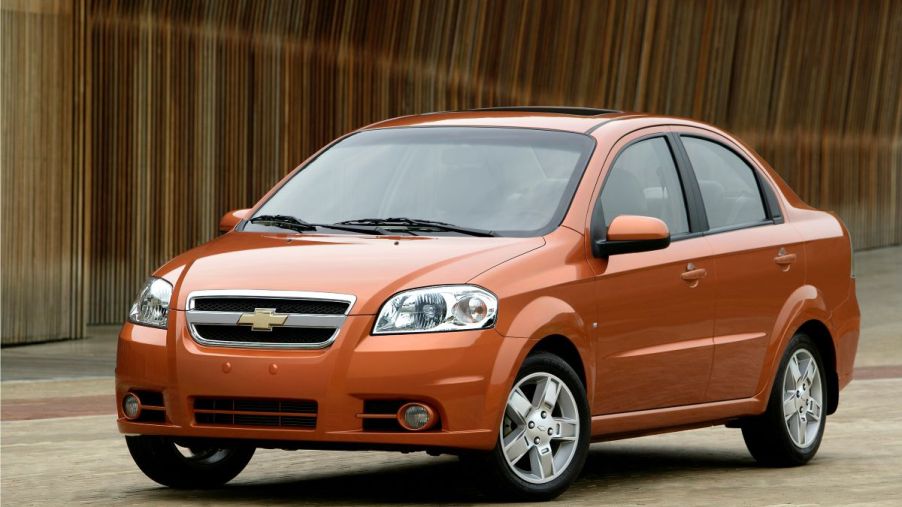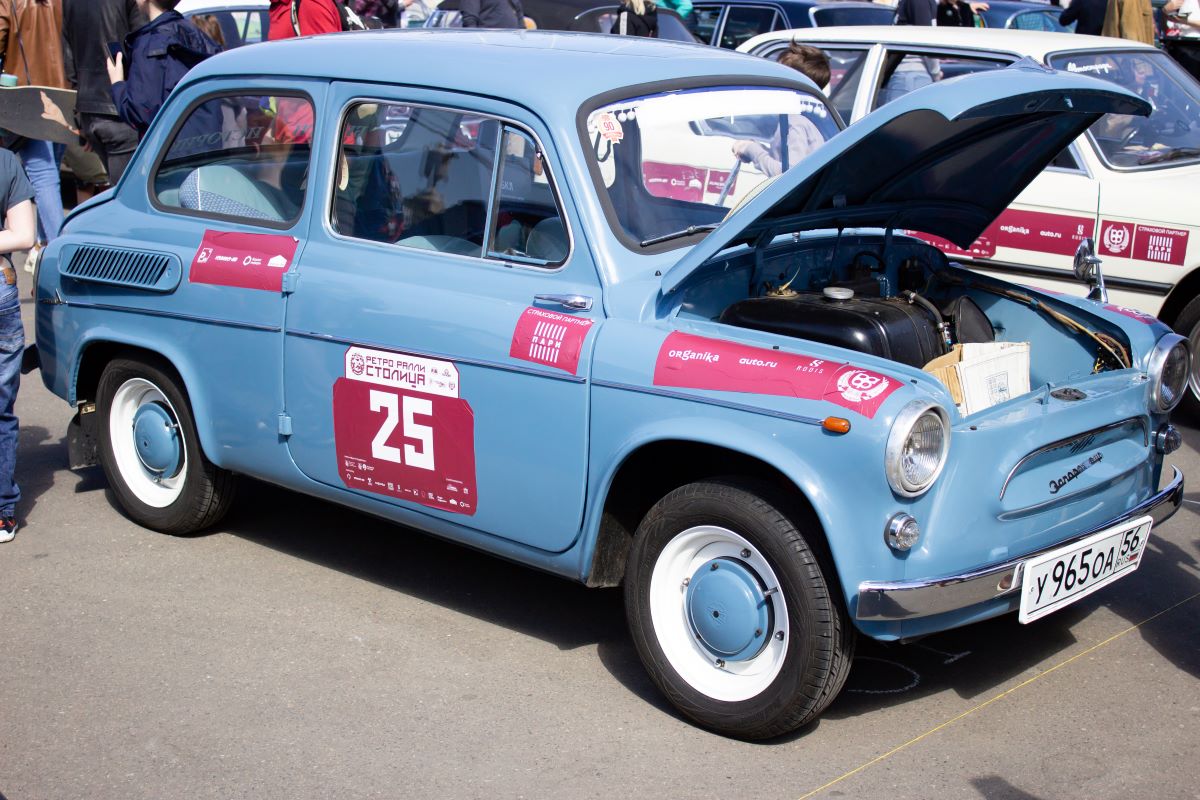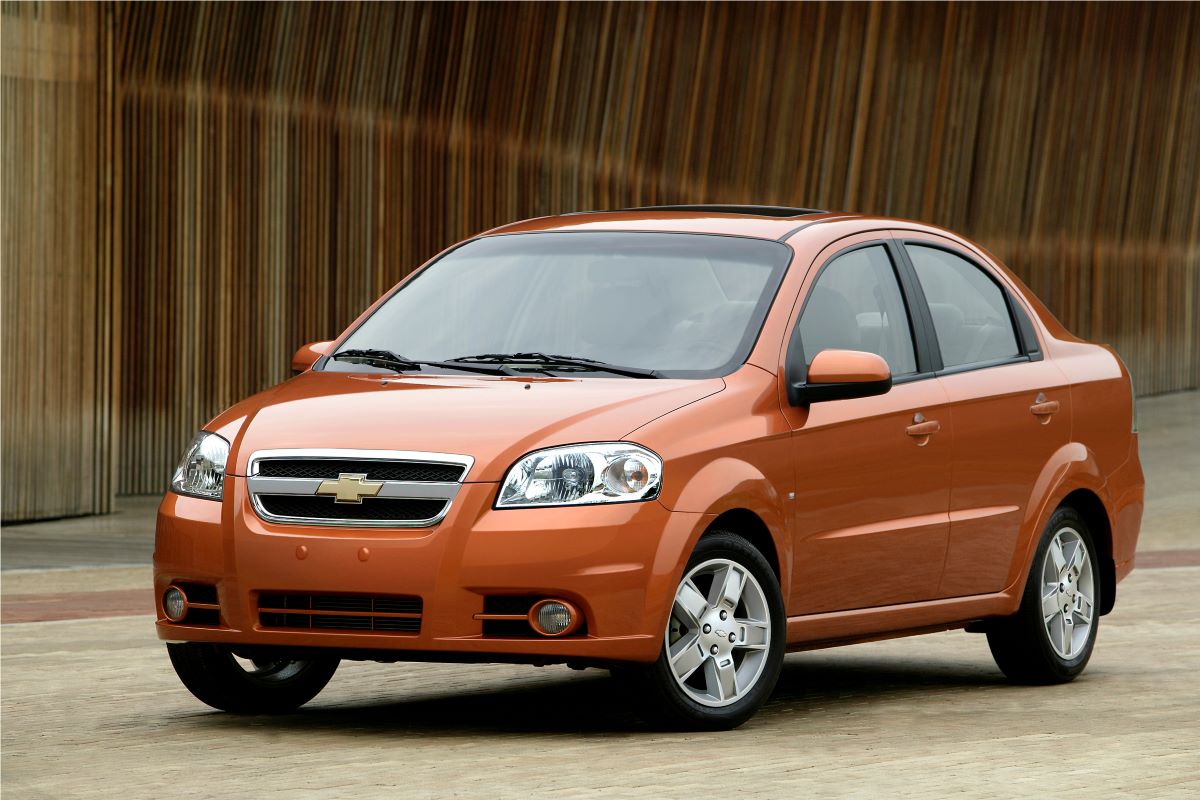
From Ukraine With Love: Russia’s Chevy Aveo
Russia and Ukraine have forever a deep connection. Whether it be their literature, topology, or armed skirmishes, they have a connection, even if it cost a few Romanovs. But the modern darling of the two nations isn’t a cause fit to unite the mother country or grant its political satellites independence. It’s a car: the under-the-radar cheap subcompact Chevy Aveo, and it’s almost a guarantee you didn’t expect that.
What is ZAZ?

Russia’s Chevy Aveo is built by ZAZ. Yes, ZAZ, which is short for Zaporizhia Automobile Building Plant, and was one of the manufacturing hubs following the nation’s 1861 emancipation from Russia’s ruling Romanovs. Owing its origins to German agricultural magnate Abraham J. Koop, manufacturing at the southwestern Ukrainian site began in 1863, according to Andy Thompson’s book, “Cars of the Soviet Union.” After the various upheaval and revolutions of the early 20th century, ZAZ began pumping out cheap and not-so-cheerful economy cars as a state-operated Kommunar factory.
When the aging Moskvitch 401 was slated for discontinuation, the Minavtroprom—the Soviet Union’s automotive minister—looked to the Italians for assistance. Compact economy cars had spread like wildfire throughout Europe by the late 1950s, with some even hitting the United States. To replace the outgoing people hauler built by Moskvitch, ZAZ was tasked by the Minavtroprom to follow the design of the Fiat 600. After a hilariously terrible motorcycle engine-powered prototype, an equally dreary final model arrived: the ZAZ-965 Zaporozhets, which entered production in October 1960.
Over the years, ZAZ expanded its range of models, including vans and trucks, and most were Fiat-derived concoctions. But not long after Reagan’s speech at the Berlin Wall and the collapse of the USSR, ZAZ got to work producing vehicles in collaboration with other international car manufacturers. For instance, General Motors (GM).
America brings a little Korean car to Russia via Ukraine
It’s probably no surprise that GM is a global car company and has been for a long time. When the Detroit giant took over South Korean manufacturer Daewoo Motors in 2002, it had a perfect platform for a “world car,” one that could be rebadged under a host of umbrella brands. Adapting the first-generation subcompact Daewoo Kalos to the plan, the newly-minted GM Korea launched—wait for it—the second-generation Kalos. How exciting.
The Kalos? What about the Aveo? Actually, GM’s T200 Kalos was marketed under seven brands:
- Chevrolet
- Daewoo
- Holden
- Pontiac
- Ravon
- Suzuki
- ZAZ
While the Kalos is the name of the vehicle on which all are based, it was sold in at least 120 countries under a dozen or so names. ZAZ’s Chevy Aveo rebadge, the Vida, doesn’t have a direct translation in Ukrainian, yet “vida” within the Romance languages means “life.” Over the centuries, there was some Romance-Slavic language mixing, but life is just about as much as one gets with their rebadged Chevy Aveo.
The Chevy Aveo for Russia’s working class and beyond
Chevy Aveo production wasn’t moved to the ZAZ plant proper until 2012, but the modern people’s car flew off the production line beginning in 2002. The three, four, or five-door sedan or hatchback Vida would breathe life into the post-Soviet working class, which was better than walking. True to form with any car for the masses, the Russia’s Chevy Aveo came with a selection of stressfully underpowered engines. The smallest was a 1.2-liter, and the largest was a gargantuan 1.6-liter four-pot.
Shifting the wheezy powertrain was done using one of two options. A four-speed Aisin 80-40LE manual came in standard Vida. Those looking for lazier performance welcomed the GM-wide five-speed automatic.
The interior of the ZAZ Vida is much like its power output, spartan. Nevertheless, it has the bare-bones basics to get one around. It has seats where four average-sized adults can sit, an uncomplicated three-spoke steering wheel, two air vents in the center stack, and one wide slot beneath them. Judging by the size, it’s a perfect fit for a thick slice of Borodinsky bread or at least half a dozen Prianik.
Those wanting to hold more sweets and treats in their ZAZ could also choose the panel vane variant. It’s hard to say if the Vida Cargo was seen in the Western Hemisphere, but it’s styled to fit in with the utes of the East, particularly Oceania.
Is the Chevy Aveo a good car?

In the U.S., the Chevy Aveo was discontinued by changing its name to Sonic. Now that subcompacts are dying breed stateside, it’s easy to say that the Aveo was a failure. Pretty much everywhere else, it has been a brilliant success. It’s assisted countless millions gaining access to transportation.
The Chevy Aveo is also part of a famed type of car design. Bet you didn’t know that.
Interestingly enough, famed car designer Giorgetto Giugiaro designed the first-gen T100 Lanos. Therefore, you can tell naysayers of the Chevy Aveo, and all of its subsequent variations, regardless of how terrible some may be, they are Giugiaro-designed classics.


